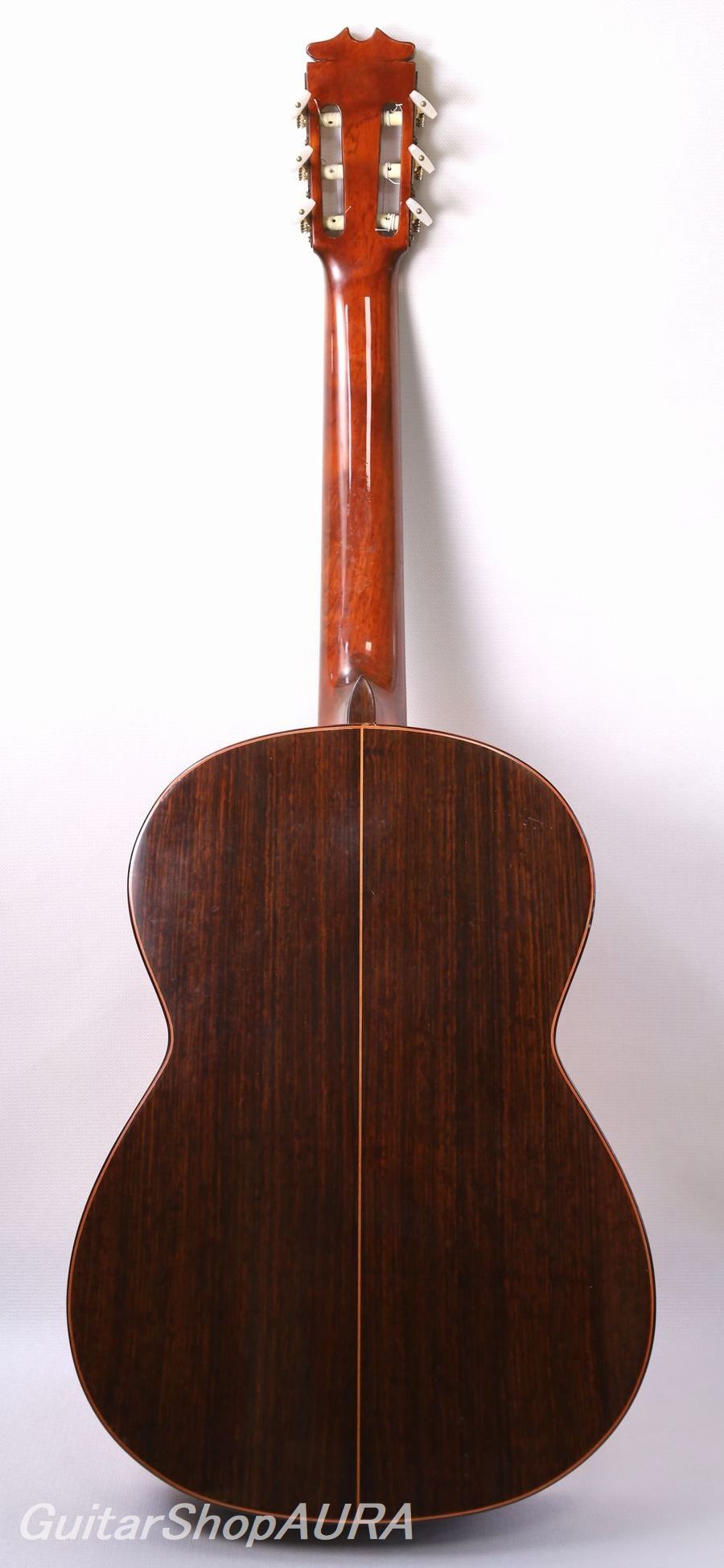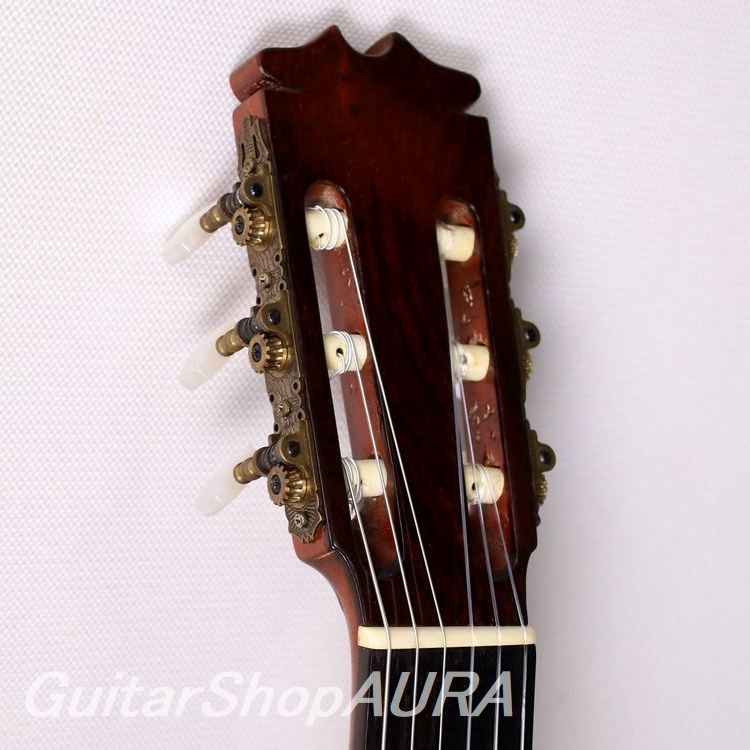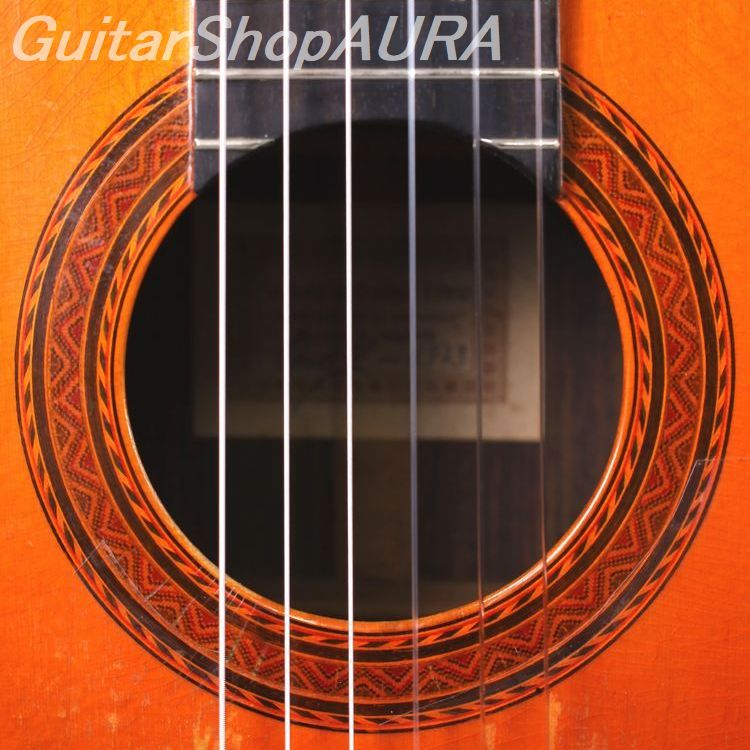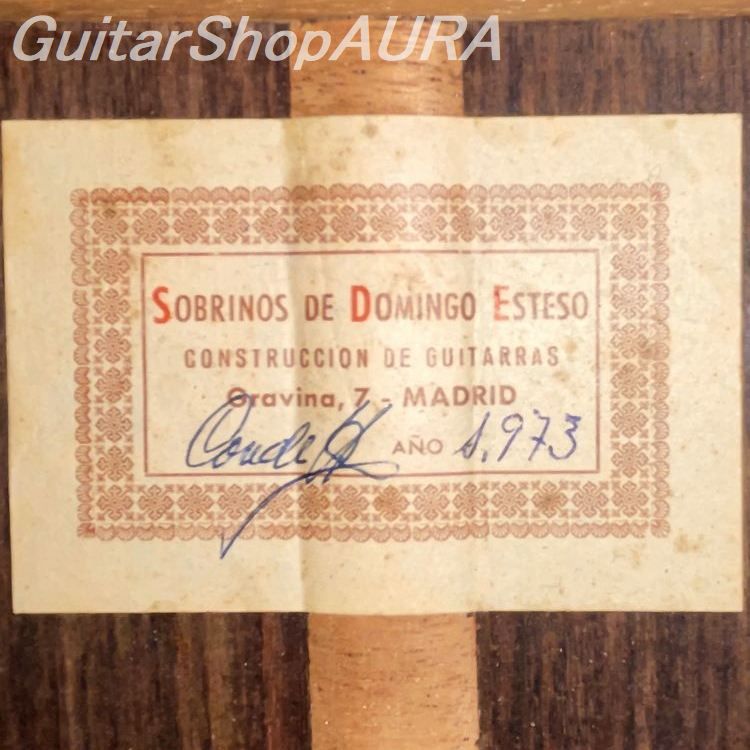Neck:Cedro
Fingerboard:Ebony
Finish:top/Lacquer back & sides/Lacquer
Tuning Machine:VANGENT
String height:1string 2.5mm/6string 3.5mm
[Luthier Information]
Among the many distinguished flamenco guitar brands in Spain, Conde Hermanos stands as one of the most iconic and enduring. The origins of the brand trace back to the legendary workshop of Manuel Ramírez (1864–1916) in Madrid, where Domingo Esteso (1882–1937) worked as a luthier alongside Santos Hernández (1874–1943). In 1919, Esteso established his own workshop on Gravina Street in Madrid, laying the foundation for what would become the Conde legacy.
Esteso’s craftsmanship was passed directly to his nephews — Faustino Conde (1913–1988), Mariano Conde (1916–1989), and Julio Conde (1918–1995) — who joined the workshop as apprentices. After Esteso’s death, the three nephews continued guitar making under the label “Viuda y Sobrinos de Domingo Esteso” (Widow and Nephews of Domingo Esteso). When Esteso’s widow (Nicolasa Salamanca, who had also handled guitar finishing) passed away in 1959, the label was changed to “Sobrinos de Domingo Esteso / Conde Hermanos”, marking the emergence of the now-famous Conde Hermanos name.
In the 1960s, the Conde brothers modernized the instrument's internal structure and design, moving away from the traditional Esteso blueprint. This period also saw the introduction of the now-iconic Media Luna (half-moon) headstock shape, which became synonymous with their high-end models. The growing international demand for flamenco guitars during this time helped solidify their global reputation.
In 1980, Mariano established a new workshop on Calle Felipe V in Madrid, working alongside his sons Felipe Conde I and Mariano Conde II. Though initially collaborating with the Gravina workshop, the Felipe V workshop became independent after Faustino's death in 1988. The passing of Mariano I in 1989 saw his sons officially take over, and the Felipe V shop soon became the most commercially adaptive and responsive of the Conde workshops.
In 2010, the two brothers branched out independently — Felipe Conde and Mariano Conde — each establishing their own brand while maintaining the traditional craftsmanship of Conde Hermanos, infused with their individual artistic vision.
Meanwhile, the Gravina workshop, overseen by Faustino’s widow into the 2000s, has since closed. Julio Conde operated a separate workshop established in the 1950s on Calle Atocha. After Julio’s passing in 1995, his daughter and granddaughter took over, continuing to produce instruments under the Conde Hermanos label.
Conde Hermanos guitars have been famously played by Paco de Lucía, among many other renowned flamenco guitarists, and remain essential instruments for serious flamenco enthusiasts worldwide.
[Instrument Details]
This is a 1973 “Sobrinos de Domingo Esteso”–labeled Conde Hermanos flamenco guitar, a rare short-scale model (648 mm scale length) from this distinguished maker. Featuring Indian rosewood back and sides, this is the so-called negra model, offering greater tonal depth and sustain compared to traditional blanca models. The body depth is also notable: approximately 96 mm at the neck joint and 104 mm at the lower bout, suggesting this guitar may have been either a custom order or part of an experimental series produced during this period.
The top bracing is a unique configuration:
Two harmonic bars above the soundhole, with the spaces in between filled with thin reinforcement plates.
Two harmonic bars below the soundhole, the one near the bridge installed at a slight diagonal.
Narrow (approx. 2 cm) reinforcement strips are placed along each side of the soundhole, connected to short vertical braces that run upward toward the neck, aligned with the fan-brace geometry rather than the curve of the sides — a non-standard approach.
Below the waist, the top is supported by seven symmetrical fan braces, with two V-shaped closing bars at the bottom, and a full-size bridge plate. The guitar's main resonance is set between G♯ and A.
This bracing style — with its seven fan braces and vertically oriented side braces — bears clear influence from the designs of Ignacio Fleta, offering a rich, full-bodied tone. The sound is notably warm, smooth, and direct, with controlled response and excellent clarity, while maintaining all the necessary characteristics for flamenco performance.
The body is finished in lacquer, showing fine weather checking throughout — common for instruments of this age. There are no visible cracks in the wood. The soundboard has typical play wear, with considerable finish wear near the soundhole (now protected by a golpeador plate).
Neck and frets are in good playing condition, though the neck angle is slightly steeper than typical for flamenco guitars, resulting in slightly higher action: 2.7 mm (bass) / 3.9 mm (treble) at the 12th fret.
Saddle height is low (approx. 0–1 mm of adjustment space).
Some fret leveling issues are noted beyond the 13th fret but do not impact normal playing.
〔detail〕
| Instrument | Sobrinos de Domingo Esteso |
| Category | 輸入フラメンコ オールド |
| Number/Model | |
| Scale length | 648mm |
| Country | Spain |
| Year | 1973Year |
| Top | Solid Spruce |
| Side&Back | Solid Indian Rosewood |
| Condition※ | 6 |
| List price | 時価 |
| Price (tax included) | お問い合わせ下さい。 |
| option | Hard case |






